Ohio Milksnakes
Milksnakes (Lampropeltis triangulum) are distributed throughout Ohio and
are fairly common to find under rocks, boards, and other debris.
One thing that makes them interesting is that they are variable in coloration.
My observations are limited to southcentral and southeastern Ohio, in the
counties of Adams, Athens, Gallia, Hocking, Jackson, Lawrence, Meigs, Pike,
Ross, Scioto, Vinton, and Washington.
Most of these counties are represented below.
I figure that I have seen somewhere between 500 and 1000 Milksnakes in
this area over the past 20 years.
Below I am focusing on the variability in their color patterns.
I am also only showing adult snakes, with a bonus exception at the end.
The juveniles are more brightly colored. The photos vary in quality, with
many of them being photographed in situ, sometimes in
poor lighting conditions.
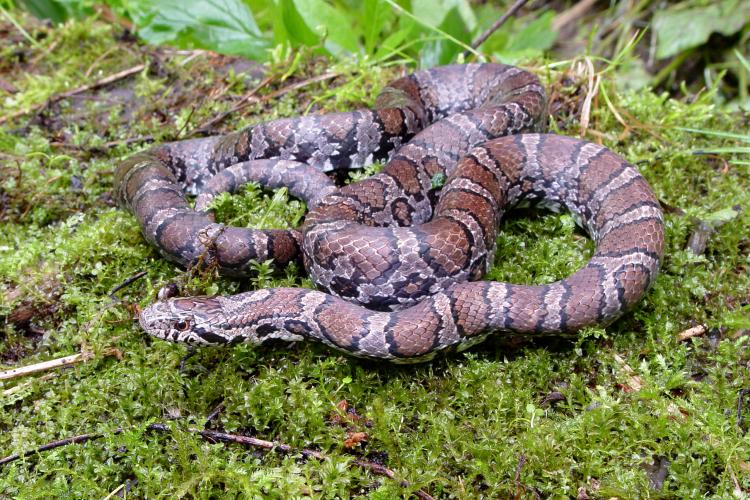
Athens County. This is a very typical color pattern.

Athens County. Shown as found under a board pile early in the morning.
It's always nice to find two together with contrasting patterns.
The lighting is not ideal.
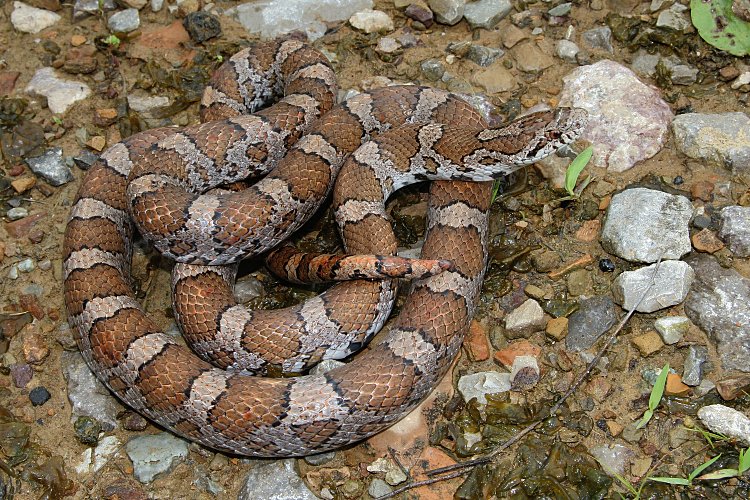
Athens County. A nice light colored snake.
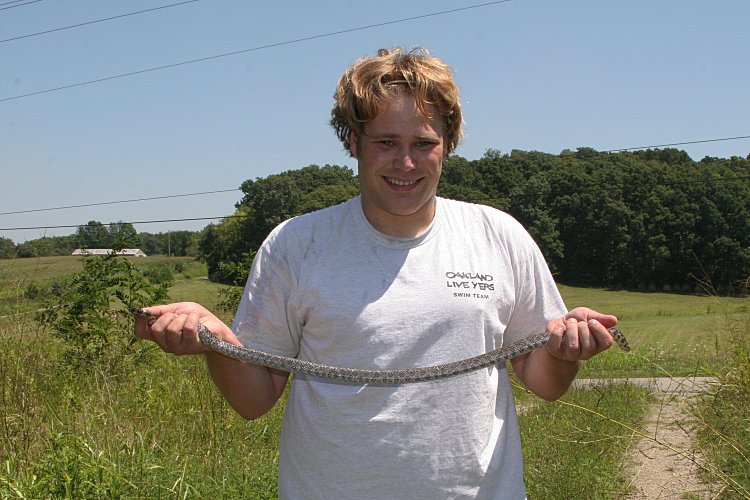
Adams County. My buddy Jason is showing off the size of this one,
which was 39” TL. That's about as big as they seem to get around here.
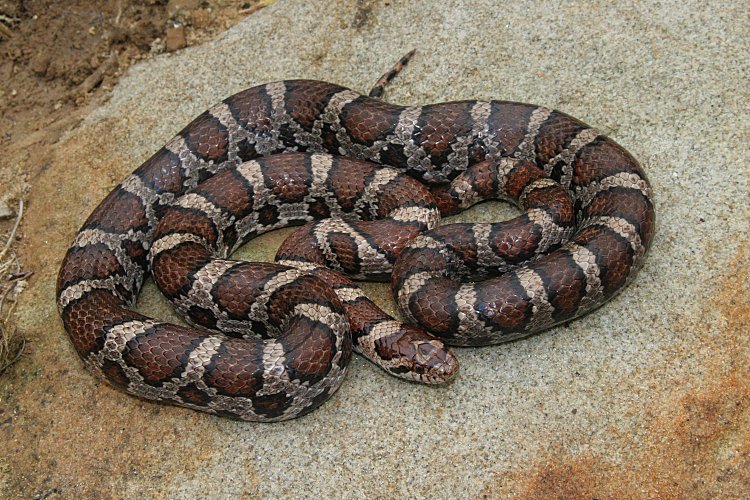
Vinton County. Milksnake. Just a solid Milksnake.
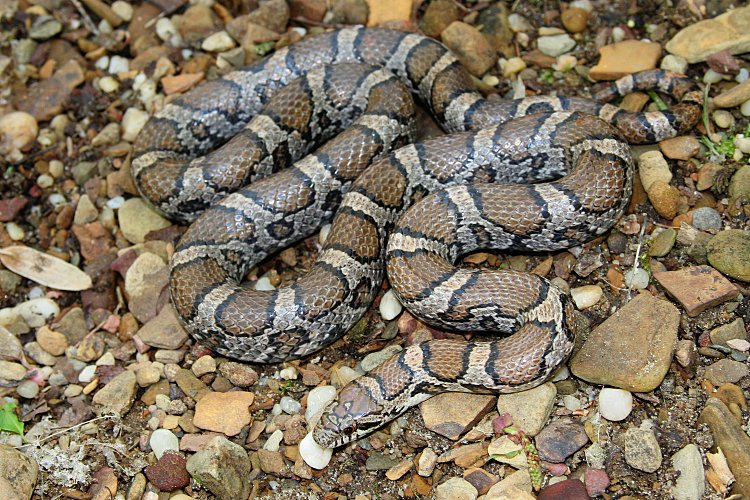
Jackson County. Another common variation.
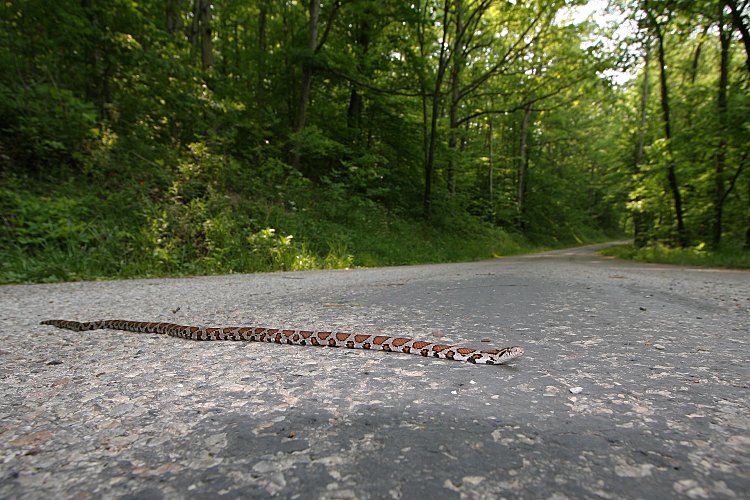
Vinton County. An attractive Milksnake, as found on a road one day.
You don't find them out on the crawl very often during the daytime.
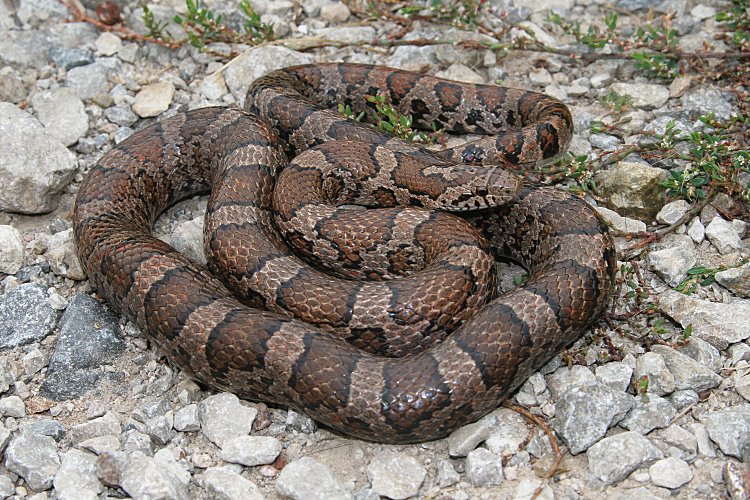
Ross County. A large and rather handsome Milksnake.
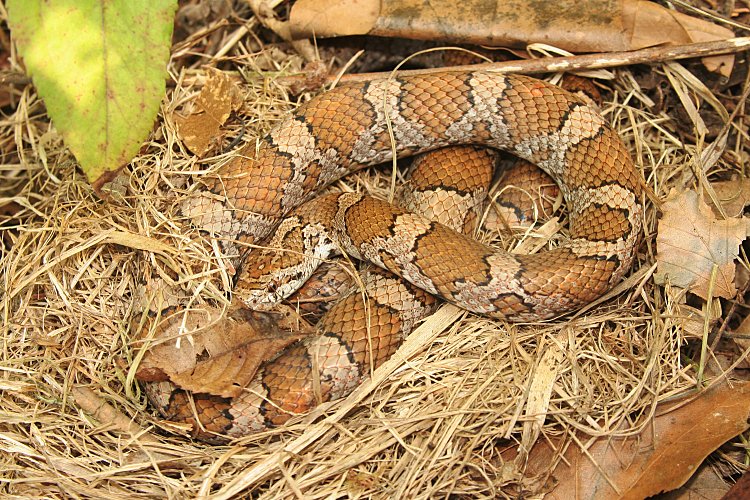
Athens County. Shown as found in a rodent nest under a piece of tin.
A very attractive light-colored Milksnake with very narrow black bands.
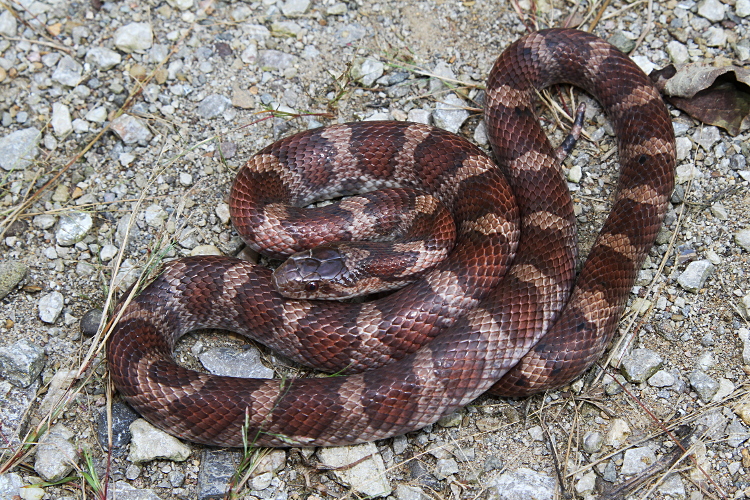
Gallia County. This is perhaps my favorite Milksnake. It has no black
on it. I'd call it a wine phase. Unfortunately, it was a hot day, and
it didn't want to sit still for photos. I'm still kicking myself for
not getting better photos of this one.
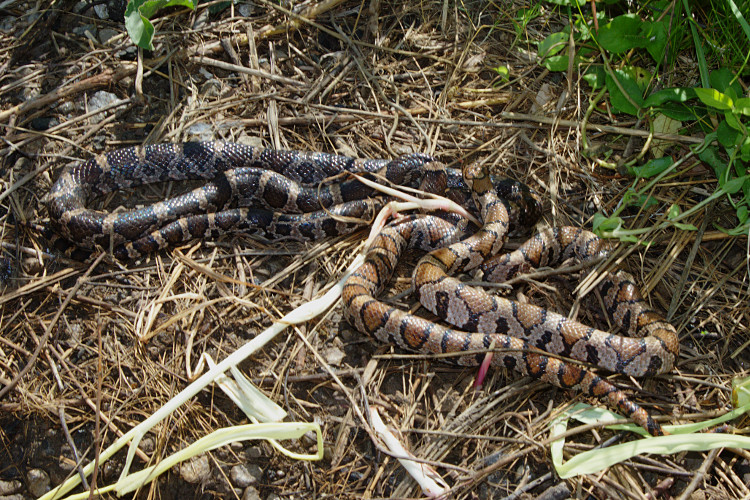
Gallia County. A pair of Milksnakes, as found under a piece
of carpet. Two extremes of color variation. I just wish the lighting was
was better...

Lawrence County. An attractive Milksnake, as found under a board
on June 14, 2015. I believe it is a female, just about ready to lay eggs.

Lawrence County. For an adult, this Milksnake has a lot of red remaining.
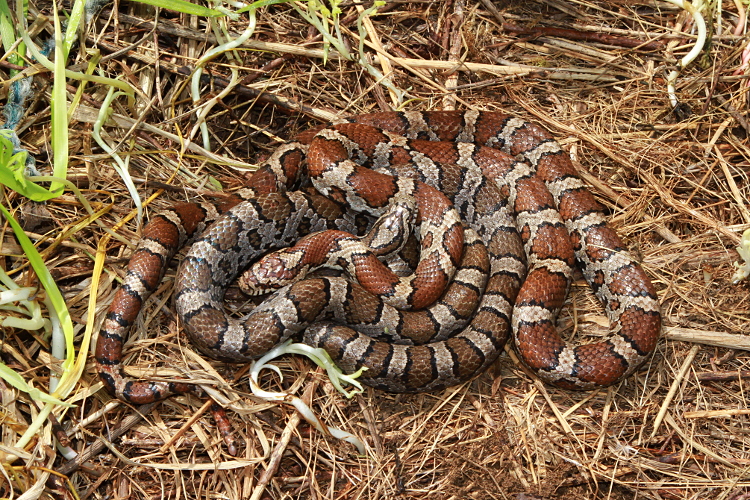
Lawrence County. A pair of Milksnakes, as found under carpet.
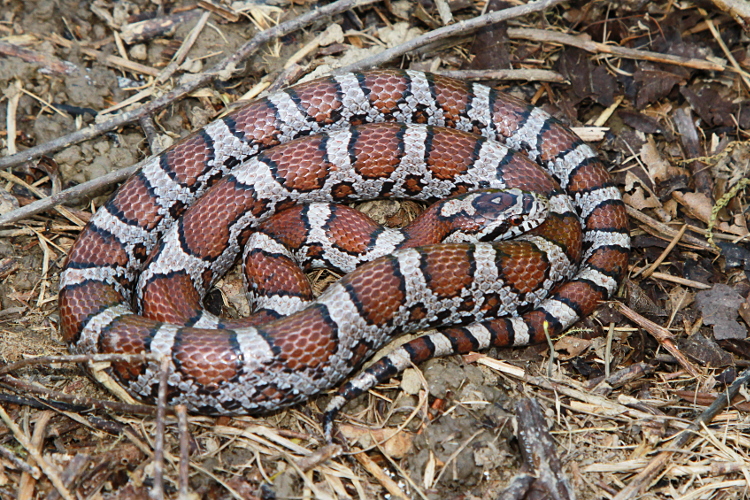
Lawrence County. An attractive Milksnake, shown as found under some cover.
It is retaining a lot of red.
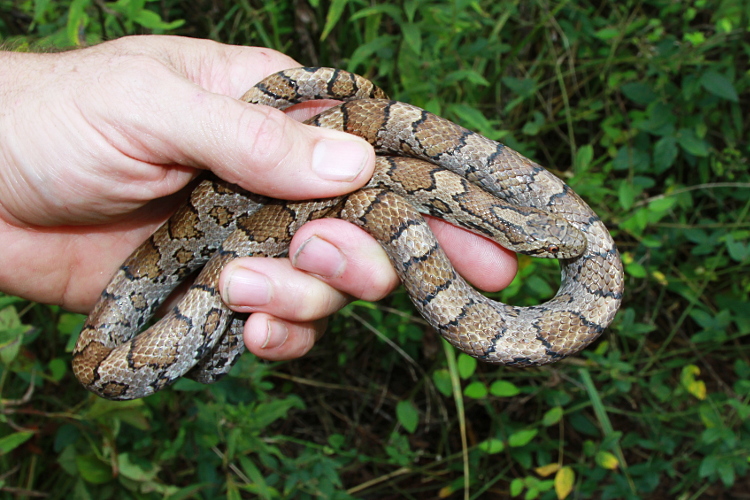
Gallia County. I call this variant of Milksnake the buckskin phase.
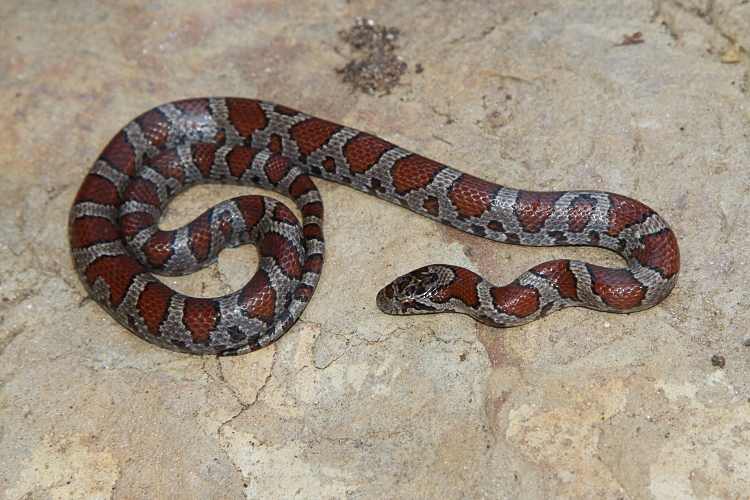
Gallia County. I really like the scarlet and gray on this Milksnake.
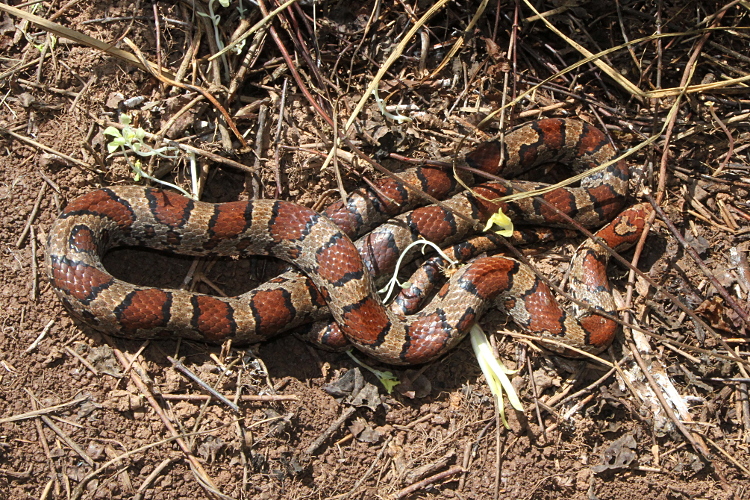
Gallia County. Shown as found under a board. This was really an
attractive Milksnake. I should have taken more time to photograph it
properly out of the sun.
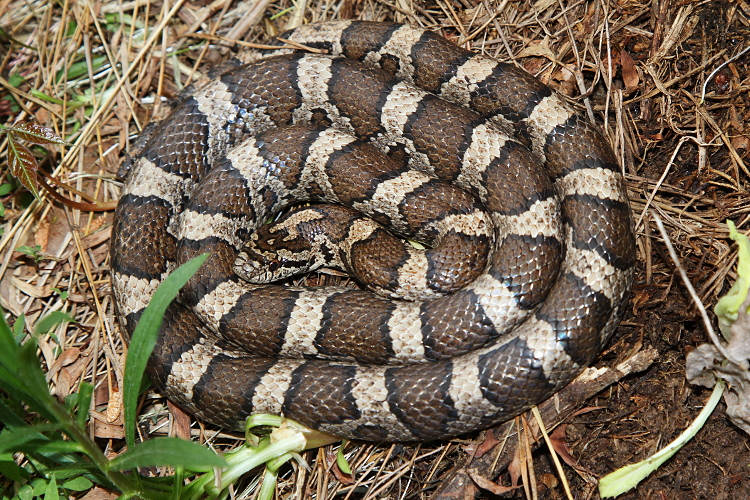
Gallia County. Shown as found under a board. I think the dark brown and
light tan on this Milksnake look really sharp.

Lawrence County. An attractive Milksnake.
That's it for the Milksnakes. I do want to include one more thing.
I have twice found clutches of Miksnake eggs in the field and
hatched them out. Here's one of them:
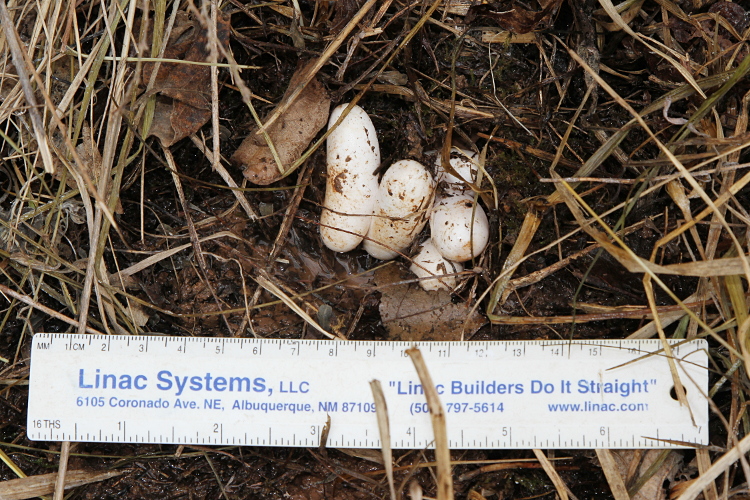
Shown as found under board on July 10, 2015. They hatched over September 15-19.
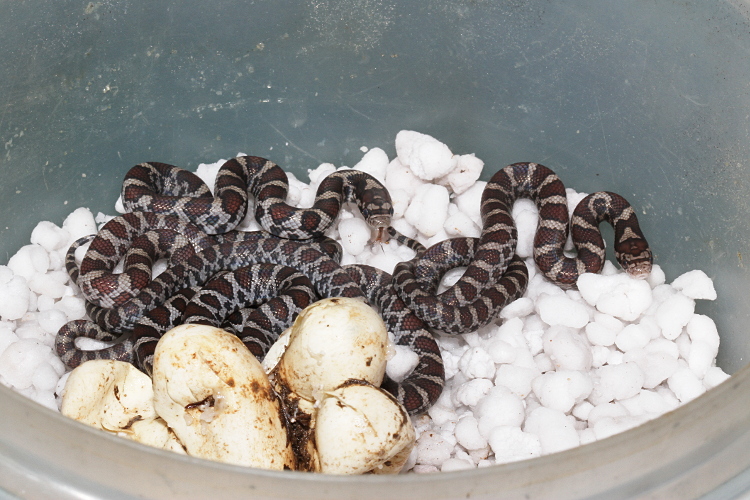
The hatchlings. They will be more brightly colored once they shed their skin.
I released them at their point of origin a couple of days after they hatched.
Here's some measurements I took before releasing them:
| snake |
#1 |
#2 |
#3 |
#4 |
#5 |
| weight |
3.62 grams |
3.81 grams |
3.69 grams |
3.80 grams |
3.86 grams |
| total length |
194 mm |
215 mm |
194 mm |
202 mm |
210 mm |
| snout-vent length |
170 mm |
187 mm |
169 mm |
178 mm |
182 mm |
That's it. I hope you enjoyed the Milksnakes!





















